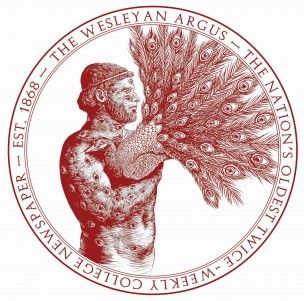Investigating breaking news on a university campus is no different than investigating any other tight-knit community—unless you refuse to see college students as a multifaceted community with diversity of belief and behavior. In the days and then weeks following the series of student hospitalizations last month, multiple news outlets, some local, many national, defaulted to this flat characterization, refusing to provide Wesleyan University students with the empathy required to report on and write about a school in shock and hurt.
Reporters inquired about Wesleyan students’ reactions, administration’s response, the school’s drug culture, and its counter-culture reputation. Certainly questions worth asking, and ones that we at The Argus ourselves asked. Some outlets sent emails; others sent camera crews, setting up camp along High Street to seek comment from passersby.
What stuck out consistently about this coverage—which varied from the straightforward (Washington Post: “A dozen hospitalized after apparently overdosing on Molly at Wesleyan University,” 2/23/15) to the charged (AP: “Wesleyan president to students: Turn in the drug dealers,” 2/23/15) and the mean-spirited (Daily Caller: “12 Students at $61,198 College Overdose on Molly,” 2/24/15)—was its flat characterization of Wesleyan students as a whole.
On March 16, The New York Times published an article detailing the string of hospitalizations and student arrests following a police investigation. Beyond its chilling opening, the article kept mostly an even tone until its conclusion attempted to paint in broad strokes a picture of a campus-wide drug culture, quoting a single alumnus from the class of 1973 and two unnamed students.
While the article itself endeavoured to stick closely to facts, the following day’s Reporter’s Notebook feature (a regular first-person column on the Times’ website) revealed the writer’s troubling assumptions about the Wesleyan community.
“No one had ever really offered me drugs in college, so I had no idea how I was supposed to find them,” wrote Tatiana Schlossberg, the Times reporter sent to the University. “I told my younger and much cooler brother I had to go to Wesleyan to report on drugs. He answered: ‘Why are they sending you? You’re practically a narc.’ And so the stage was set.”
To use her language, both Schlossberg’s reporting and her attitude were decidedly “uncool.” At times failing to disclose her job and intentions, Schlossberg moved between social groups attempting to uncover “the Wesleyan drug scene.” To her surprise, she wasn’t immediately offered any form of drugs, finding that many of the students she talked to did not themselves partake. Attending a concert, she expressed surprise that nobody was talking about drugs, let alone doing them.
Schlossberg’s attitude upon arriving at Wesleyan shows a fundamental misunderstanding of the diversity of a college campus, composed of students from multiple countries, varied socioeconomic backgrounds, and diverse interests. Yes, Wesleyan leans more liberal than most other institutions of higher education, but even a single day on the campus should reveal the spirited debates on countless issues within the University’s multifaceted population.
Reducing the entire student body to one “hip” image—an image of ubiquitous drug usage and radical politics—denies the community proper representation. Moreover, it falls into a dangerous trend of presenting young people (those dreaded Millennials) as a problem that must be solved.
In order to represent colleges with the nuance of their communities and the respect they deserve, reporters must be transparent with those they interview. According to Greg Marx of the Columbia Journalism Review,, “Undercover reporting can be a powerful tool, but it’s one to be used cautiously: against only the most important targets, and even then only when accompanied by solid traditional reporting.” Schlossberg’s reporting felt less like responsible undercover journalism and more like deception.
Mindfulness is imperative when interacting with a community in distress. There was a clear lack of compassion in the ways that reporters approached students about their hospitalized and arrested peers and friends. While, as with any story, students are and should be sources of information for journalists, they should also be regarded as human beings who have been personally affected. Even a cursory survey of YikYak revealed that students were displeased with the aggressiveness and condescension with which reporters approached students for interviews.
As with any sort of media, those interviewed become public spokespeople for their community, whether or not they see themselves as such. While representation can never be perfect, it becomes the responsibility of the journalist to ensure that the spokespeople they choose reflect the diversity of the community.
Reporters must be cognizant that they are outsiders to the Wesleyan community, as they would be on any college campus or within any community that is not their own. Understanding a culture requires an open mind and awareness of a one’s own bias that Schlossberg, for example, did not show when she assumed every student she spoke to would be both a heavy user of and willing to discuss ambiguous “drugs.”
Wesleyan will need to have a public discussion about drugs on its campus; that’s a given. Perhaps it will lead to overnight policy changes, but it’s unlikely the larger culture will change so quickly, or at all. After all, drugs on campus are a topic of debate—less a dialogue than a forum—happening already, happening since the school was founded, happening from the ground-up as much as from the top-down. Reducing this student body or any student body to a single dimension and denying students respect, however, does a disservice to both journalism and those voices whose stories it seeks to tell.
-
Ella Dawson
-
k.d. lang’s mangina
-
-
Jack
-
L
